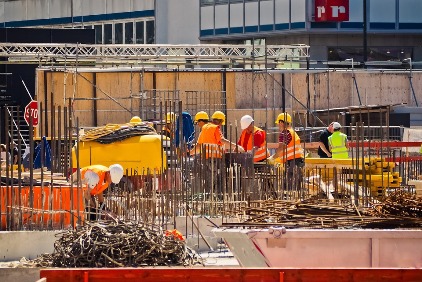Unsafe construction sites are claiming the lives of innumerable workers. On the evening of July 27, Manjunathan, a 33-year-old construction labourer who had migrated to the city from Dharmapuri in Tamil Nadu, climbed to the third floor of an under-construction house at Bettahalasuru near Yelahanka. The iron rods he was using for centering work (creating a temporary structure over which concrete is poured) came in contact with a live wire that was close to the house. He was electrocuted, fell over 30 feet to the ground, and died on the spot.
V. Shetu, his elder brother who worked as a construction labourer based out of Dharmapuri, had to travel the next day to the city to file a police complaint. He said that none of the workers was provided safety equipment — not even helmets or shoes — and there was no supervisor to warn the workers of the live wire. There were no precautions, and this is common at small construction sites.
Manjunathan left behind two children — the eldest being just three years old — and a mountain of debt for his family. A week later, the builder offered Mr. Shetu Rs 4 lakh to close the case. Mr. Setu also said that there were many doubts regarding the case but since they are not financially stable, they cannot afford to fight the case.
At least nine labourers have lost their lives in accidents at construction sites in the past month. The reasons have varied, from falling from scaffoldings to collapse of buildings to being crushed by heavy earth machinery. All the complaints registered against the contractors state no safety precautions were taken.
On July 29, the supervisor reportedly forced a reluctant Pintu Barman, a 22-year-old migrant worker from West Bengal, to fix the motor in a water sump of an under-construction building at J.P. Nagar. Power supply to the motor had not been cut off and Pintu was electrocuted. His brother Govinda Barman says the builder paid them Rs 2 lakh to close the matter.
Poor implementation
N.P. Samy, president of Karnataka State Construction Workers’ Central Union, said while safety laws to prevent construction accidents are strong, their implementation is lacking. He said that the labour inspectors visit large construction sites, but when it comes to the smaller ones they do not bother. This is a concern as most of the construction in the city happens in smaller sites, where rules are violated. Workers are not provided even helmets, let alone safety nets for taller buildings.
This hazardous ecosystem continues to prey on migrant workers, who perform these “high-risk” jobs for little pay, he said. He also confirmed that after accidents, these workers are given money to go back to their hometown and the incident will not come to light as a result of which any number does not show the real picture.
T.M. Ramakrishna, general secretary, Karnataka State Construction Worker Associations’ Coordination Committee, said that while cutting corners for profits has led to accidents, most workers themselves do not know their rights to ask for better safety standards. He said that the Karnataka Building and Other Construction Workers Welfare Board (KARWWB) is supposed to create this awareness, but it has been barely functional.
Staff shortage
The KARWWB, which is mandated to spend on worker welfare by collecting a cess from builders, is short-staffed, while senior officers at the helm have been transferred frequently. Since the formation of the board in 2007, as many as 439 workers have been given compensation — amounting to Rs 5.46 crores — for injury or death across the State. However, this includes only registered workers. Workers like Manjunathan and Pintu, who are unregistered, are excluded.
Rohini Sindhuri, the secretary of KARWWB said that keeping tabs on these small construction sites is difficult. KARWWB does not get complaints from labourers. And labour inspectors cannot keep an eye on all constructions.
Previously, the board had conducted training camps and distributed equipment at construction sites. However, at smaller sites, more often than not, the equipment was found lying unused, she said. She has also confirmed that KARWWB will now buy nearly two lakh ropes to be distributed among construction workers with the message that their usage should be mandated for work above six feet in height. This might give emphasis to safety among workers and contractors.
Source: The Hindu

